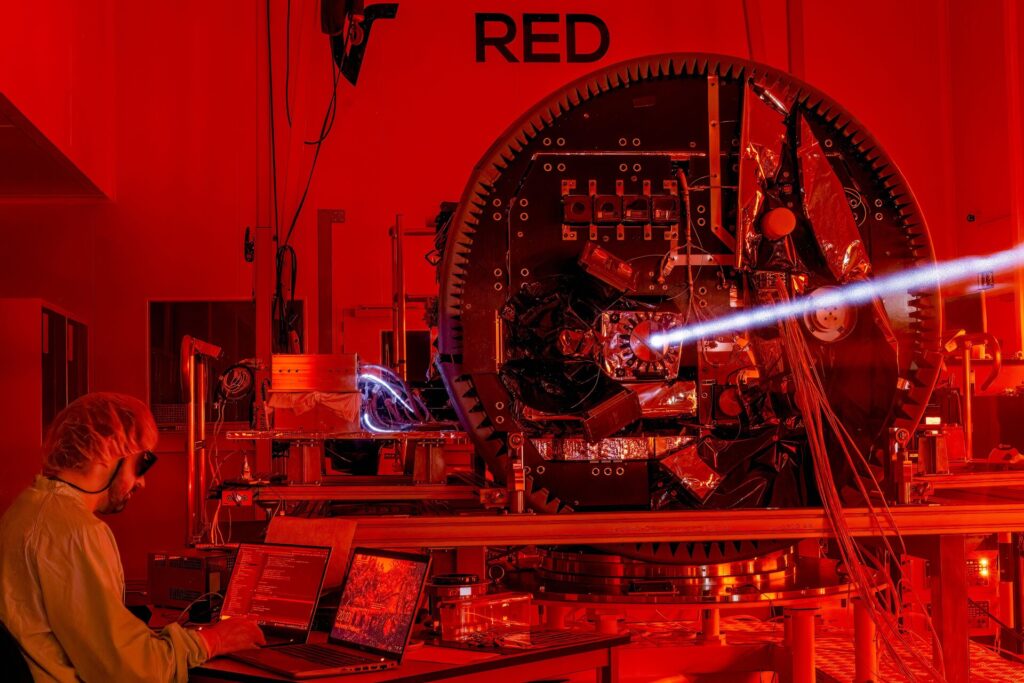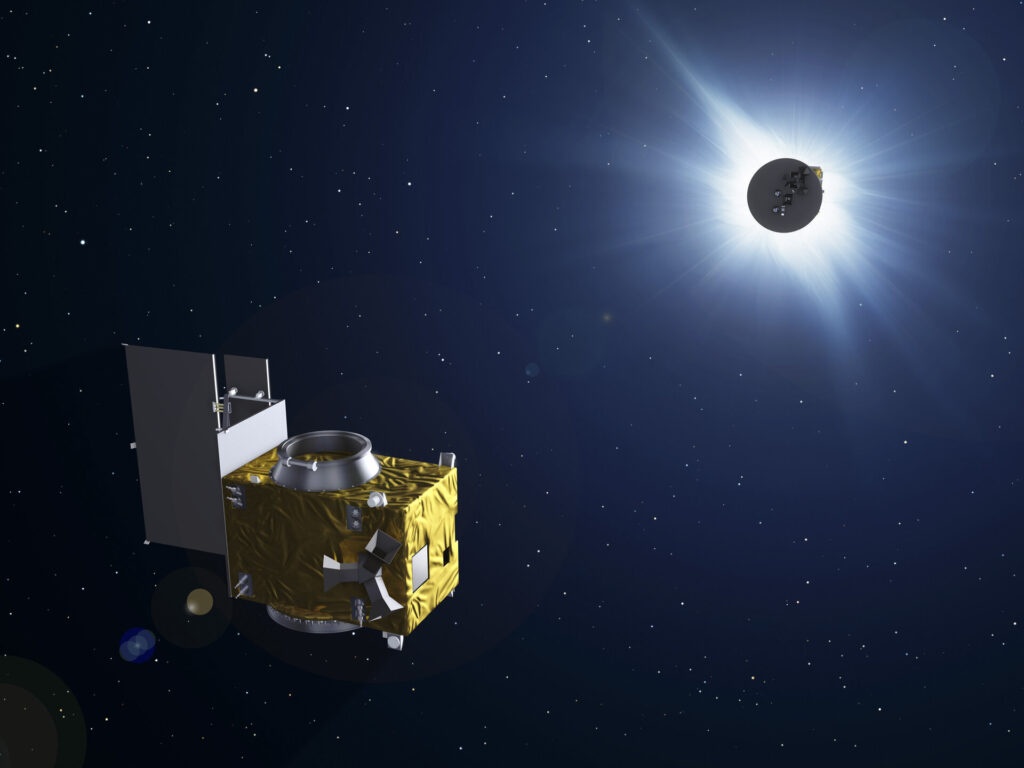The European Space Agency (ESA) has released an infrared image showing a test of the laser system. It is necessary to create artificial eclipses in near-Earth orbit.

This year, ESA launched a pair of Proba-3 satellites into space. Their main task is to demonstrate the technology that makes it possible to create artificial solar eclipses.
The essence of the idea is as follows. The spacecraft will be launched into a 19.5-hour orbit around the Earth. During each orbit for six hours, the first satellite will cover the disk of our star for the second, acting on the principle of a coronagraph. This will allow us to study the solar corona — the upper and hottest layers of the solar atmosphere that can be observed during total eclipses.

The key to success is to keep your distance. To create an artificial eclipse, the spacecraft must be located at a distance of 144 meters from each other, with an inaccuracy of no more than a few millimeters. Laser system is needed for this purpose. It will constantly measure the distance between the devices, which will allow them to keep in line.
To test the operation of the laser, ESA tested it in a 60-meter clean room of Redwire Space, located in the Belgian city of Kruibeke. The test was a success.
The consortium involved in the creation of Proba-3 includes a total of over 29 companies from 14 countries. The mission will be launched using a PSLV-XL rocket from India in September 2024.
Earlier, we talked about how the airline offered to enjoy a total solar eclipse from a height of 10 km.
Follow us on Twitter to get the most interesting space news in time
https://twitter.comne/ust_magazine


